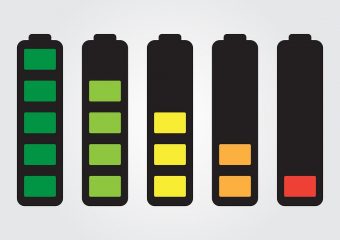
Discovery could accelerate adoption of electric cars and solar energy, as well as helping to recharge your smartphone in minutes.
A newly identified group of materials could help recharge batteries faster, raising the possibility of smartphones that charge fully in minutes and accelerating the adoption of major clean technologies like electric cars and solar energy, say researchers.
The speed at which a battery can be charged depends partly upon the rate at which positively charged particles, called lithium ions, can move towards a negatively charged electrode where they are then stored. A limiting factor in making “super” batteries that charge rapidly is the speed at which these lithium ions migrate, usually through ceramic materials.
One potential solution is to make everything much smaller, by making batteries with nanoparticles. But nanoparticles are expensive and tricky to make and so scientists have been searching for alternative materials to circumvent this problem.
Now, researchers at the University of Cambridge have identified a group of materials called niobium tungsten oxides through which lithium ions can move at astonishingly high rates, meaning much faster charging batteries.
“Niobium tungsten oxides are fundamentally different,” said Kent Griffith, first author on the study published in the journal Nature. First discovered in 1965, these materials have a rigid, open structure and have larger particle sizes than many other materials commonly used in batteries.
To measure the movement of the lithium ions through these unusual materials, the researchers used a technology similar to that found in an MRI scanner. They found that the lithium ions were moving through their test materials hundreds of times faster than they would through typical ceramic electrode materials.
Another advantage of these alternative materials is that they are cheap and straightforward to make. “These oxides are easy to make and don’t require additional chemicals or solvents,” said Griffith.
Electric cars and grid-scale storage for solar power are two environmentally friendly technologies that could be revolutionised by better batteries.
Clare Grey, professor of materials chemistry at the University of Cambridge and senior author on the paper, said the next step will be to optimise the use of this material in a full battery, which can be cycled for the time and length needed for electric vehicles. “For example, electric buses where you may want to charge the bus very fast at the bus stop,” she added.
“The discovery is very exciting in terms of what it does for battery performance,” said Dan Brett, professor of electrochemical engineering at University College London, who was not involved in the work. “The really clever thing about the work is the insight into the mechanism and ability to measure how fast the lithium ions travel through the material.”
Brett added: “This technique will also allow these materials to be further optimised, so we can look forward to future improvements in [battery] power, energy and lifetime.”
Source: theguardian



